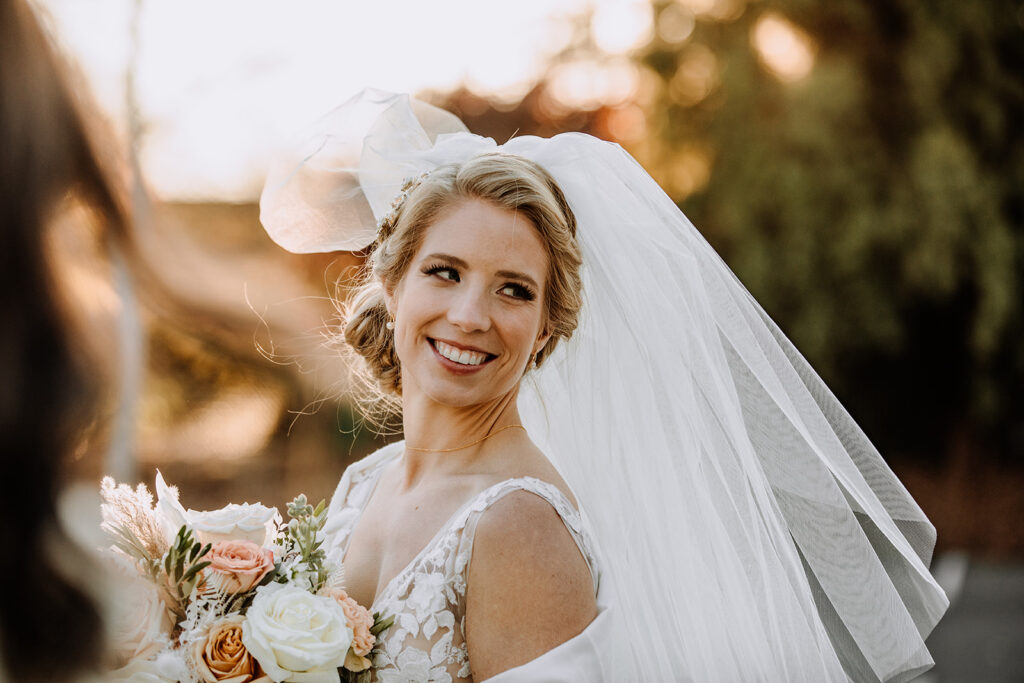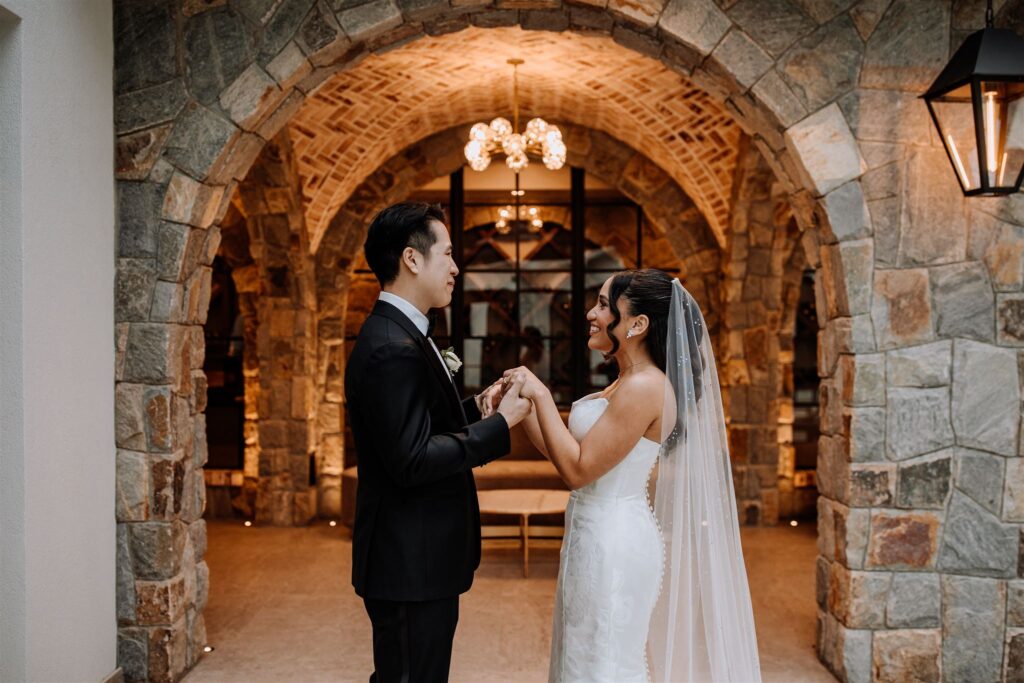We're a team of wedding, elopement and portrait photographers who put community over competition. We provide tips and resources for Photographers looking to up-level their businesses.
We're here to help When you join The Photography Business Academy
20 Things You Should Have in Your Wedding Photography Contracts
Wedding photography contracts are essential for any photo business that wants to be taken seriously. Before conducting any kind of business, you need to have a contract in place. We would highly recommend having a contract even if you are doing work for free, as you might with something like an engagement session giveaway.
Contracts spell out everything that your client will receive from you, everything you will give to them, and all of the conditions surrounding this exchange.
In most cases, you will not have to refer to your contract again as fortunately most clients are good and easy clients. On occasion, you may need to refer to it in the event things arise like a cancellation request or a client questions what they are receiving from you.
Contracts also help you by getting into the weeds (so to speak) on all the nuances of the work you will be performing. You can cover things like the extent to which images will be edited, as an example.
In our experience, contracts are really the basis of a professional working relationship. As a business owner, they will also save you in the long run. In our case, when we experienced a string of cancellation and rescheduling requests during the 2020 pandemic, it allowed us to ensure we were maintaining our cash flows and not being taken advantage of by clients in those difficult times.
Your contract should have your best interests in mind, and also spell out things for your clients so they can feel confident booking with you. Our contracts also support our clients in many circumstances, except for those that would lead to damage of our business.
While the area of contracts is a vast one, we have assembled some key tips for things to make sure you are including in your wedding photography contracts.
Where to Get a Wedding Photography Contract?
There are 3 main ways to get a wedding photography contract.
1). Make one yourself. We do not really recommend this as contract language is just as important, and you want to make sure the specific verbiage being used would hold up in court.
2). Have a lawyer draft one up for you. You can consult with a lawyer and pay a fee for them to prepare a contract for you. This does cost some money but will leave you with the best protection as it takes into consideration not only your specific contractual needs, but any special considerations that might be needed to be valid in your jurisdiction (where you live).
3). Purchase a contract online. There are many online resources you can look for photography service contracts such as The Legal Paige and The Law Tog. These (and others) have prepared template contracts specifically created for photographers. You can purchase online and begin using in your business immediately.

Top 20 Things to Include in Your Wedding Photography Contracts
1). Description of services being provided.
This section should include information about everything included in the client’s package. This should include the number of hours you are hired for, number of images they will receive, albums/physical prints included, etc.
2). Gallery delivery turnaround times.
It is important to set gallery delivery times in stone in your contract.
We recommend picking a specific timeframe (like 6 weeks) or a specific date of delivery (such as June 6th, 2025).
We do not recommend using ranges (like 4-6 weeks) as clients have a tendency to see this, and expect their images in the earlier timeframe.
For wedding photographers, this is often a contractual item that has to be referred to and made clear to clients – sometimes repeatedly.
3). How long online galleries will be kept online.
After delivery of an engagement session or wedding gallery, how long will you keep it live? We recommend 6 months to 1 year. You do not want to be locked into a situation where you have to keep hosting a clients’ files 10 years down the line.
4). Non-Refundable Retainer and payment requirements.
Your contract should spell out how much you will be paid, due dates for payment, and specifically address the non-refundable nature of your first payment (the retainer).
A lawyer drafted contract is critical for this as the specific wording used matters. The Law Tog has a great post on this topic for more detailed assessment by a legal professional.
5). Cancellation policies (for both client and you)
Having cancellation policies in writing makes it easier to address this should the need arise.
We recommend having policies written to address what happens if you cancel, and what happens if your client cancels.
In our case – cancellations by us will lead to the client receiving their money back, less money “earned” (such as for work done putting together a timeline or shooting an engagement session). For our clients – if they cancel, they forfeit their retainer payment and are subject to other costs if we have performed additional work (such as an engagement session).
6). Rescheduling policies (for both client and you)
Much like the cancellation policies, rescheduling policies also spell out what will happen if the need to reschedule arises.
We charge our clients rescheduling fees ($1,000) to move their wedding date with us, and if they move to a date we are not available, we can provide a substitute (like an associate photographer) or they forfeit their retainer payment.
Client rescheduling is one of the more challenging aspects of running a wedding photography business, but fortunately not super common (pandemics aside). It is, however, much more prevalent in portrait photography businesses due to the higher volume and lower level of commitment required from a a client.
7). Copyright.
You will want to spell out that you retain ownership of the images. If you give your clients permission to use the images for personal use (a “print release”), this can be spelled out here as well.
Also, if you want to be able to sell copyrights (or other licensing rights), this may also be a good thing to include in writing.
8). Exclusivity.
This clause indicates that the only professional photographers that can be at a wedding need to be hired through our studio.
We have never had a problem with this but have heard of cases where couples have hired multiple photographers through different studios – and this creates a difficult work environment and conflict of interest (with each photographer studio wanting to get shots).
A clause like this, while unlikely to need to address, gives you options should you arrive to a wedding and end up as one of multiple photographers hired for the day by your client.
9). Package Modification Expectations.
We do not allow our clients to change their package selections after they sign a contract with us. This is especially needed in the case a client books a high value package, and decides as they get closer they want a lower priced one.
How this would play out in real life – if a client wanted to downgrade, they would be required to cancel (forfeiting their retainer payment), and sign a new contract at our current rates. Generally, not worth it.
This allows us to ensure our revenue does not decrease for events already booked.
But can your clients upgrade? Yes, but we don’t amend our current contract. We send a new contract or invoice for the upgrades. For example, if they want to add an engagement session, that will be a separate contract to fulfill.

10). Artistic Release.
As wedding photography can often be a subjective art form, include a pretty lengthy clause in our contracts that sets expectations around how we approach creation of images on the day, things we will and will not do for photos, etc. We also require that every client acknowledges they have reviewed our portfolio.
11). Photo Editing Expectations.
Another area where many wedding photographers may find themselves challenged is in how much they are obligated to edit for their clients.
In our contract, we are very clear with the expectations.
Simplified – we will edit in line with the visual aesthetic seen throughout our portfolio (color correction, exposure adjustment, etc.). We will also make minor body modifications such as the removal of acne. Any additional edit requests are subject to a fee.
12). Limits of Liability.
While this section typically has a lot of legal jargon, it boils down to this – it limits your liability for services when you (as a service provider) are impacted by things outside of your control. This could be things like the weather, other vendors, guests, the couple themselves, etc.
Some examples of this in real life –
- A client requests and shares sample photos of wanting a wide angle shot of them in front of their venue with sunset views. Their wedding falls on a day that happens to have a hurricane. You can’t get that shot (even though you would have) by nature of the day.
- A client gives you a family photo list and includes a pairing with their mom and dad. Mom goes missing for most of the evening, and attempts to get a shot with her included does not pan out.
13). Maximum Damages.
This is a critical section in your contract. It will specify the limitation that if a client was to sue you, they could not sue for more than the total of the services provided.
14). Photographer’s Standard Price List.
We recommend including a clause that states that your prices will remain constant for a set period of time (such as 3 months), after which your client will be subject to new pricing.
In our case, this is especially valuable for add ons like albums where you may have shared a pricing sheet or information, but in a year will want to increase the price.
15). Permissions
We require that our clients get the appropriate permissions (and in some cases actual permits) for all shooting locations.
16). Remedies
This clause addresses how to go about terminating a contract if either party (the photographer or the couple) was to not fulfill any of their obligations under the contract.
17). Force Majeure.
This clause generally holds that both parties will not be responsible to each other in the event some extreme measure outside of everyone’s control impact the event. For example, if a war breaks out and impacts the clients wedding, you are not liable to photograph the wedding (it’s unsafe) and the client is not obligated to host it.
This was a hot topic clause during the COVID-19 pandemic with different law firms giving feedback on whether or not the pandemic constituted a Force Majeure. As an observation, many said “yes” early in the pandemic (such as during March 2020), but as things began to normalize, it stopped being one as it was no longer “unpredictable”.
18). Assumption of Risk.
This clause has clients verify that they understand the “risks” associated with being photographed. While we don’t typically think of being photographed as a high risk activity, some environments we work in pose greater risks. For example, we’ve done photos on the edge of cliffs, in streams, etc. – all which have dangers associated with them like slipping and falling.
19). Health & Safety.
Since the pandemic, this clause has become a mainstay for wedding photographers. Basically, it confirms that we are not obligated to photograph a wedding if it is evident it poses a health risk (such as knowing the couple or someone in attendance will have COVID-19). It also ensures that we follow state and local guidelines for health purposes. As it pertains to safety, we also highlight that we will not photograph people with guns.
20). Model Release.
Lastly, your clients allow you to use their likeness (and the likenesses of their invited guests) by us in the future when we share images on social media, our website, etc.
There are certainly other clauses that can be considered and added to your contract, however these are the most significant in our view for wedding photographers to have as they will cover the majority of issues you would be most likely to encounter.

Additional Contract Considerations
Third Party Payors
In the world of wedding photography, your clients should be your couple. It makes sense for them to be the ones you have legal obligations to, as you are creating photos of their wedding day.
This can get mirky in the event that the couple is “hiring” you, but someone else is paying the bill. It’s very common for parents to pay for wedding vendors.
In the event that a parent will be paying for their photography services, you will want to add an additional “third party payor” amendment to your contract. This makes clear that while financial support is being provided by someone other than the client, that your obligations are only to your client.
The Legal Paige Third Party Payor Addendum
Contracts for your Associates and 2nd Shooters
You may not need these as you start your journey in wedding photography, but may need them in the future as you expand your team. These are contracts between you and the people you hire as contractors to fulfill work through your company.
These contracts help validate their legal standing as contractors for your company, govern when they will photograph events for you, talk about how they can use images from your weddings, and more.
Legal Paige Templates:

How to Send and Sign Contracts with Your Clients
For many wedding photographers, it may be confusing as to how you should share your contract with a prospective client and make sure it is signed.
The best solution for sending and signing contracts is to use an online CRM service for photographers.
Why?
- This is easy and convenient for both you and your client, as well as affordable
- We recommend using a dedicated client management program, which will help you with contracts, invoicing, and much more as opposed to a contract signing platform (like Docusign). This is because you will already want to use a CRM, so you should use all of it’s features.
Example CRM platforms:
- Honeybook
- Tave
- Dubsado
- Shootproof
Our preferred CRM service is Honeybook. It’s the CRM we’ve used since the start of our businesses, and it’s been the platform we’ve used to log over a million dollars in revenue with our photography businesses.
To learn more about Honeybook, you can read this post we wrote going in depth about how to use it. You can also check them out directly using this link. Please note, if you sign up using our link and end up subscribing, you’ll get 50% off your first year’s subscription.
The final say on wedding photography agreements
The one area of your wedding photography business that you really don’t want to skimp on is the one that will protect you should things ever go south.
Paying for a good quality and legally binding contract is well worth the investment for any photographer who wants long term viability. Fortunately, consulting a lawyer or buying a lawyer reviewed contract template online is not too expensive and can also be deducted from your taxes, saving you some money come tax time.
As experienced wedding photographers, contracts have saved us on a few occasions. While we’re flexible on a lot of things with our businesses, having a contract in place is never one of them.
Always have a wedding photography contract signed before you start working with a client, and you’ll already be on a path to success!

Honesty is a cornerstone of Shoot and Thrive, so we want you to know that some links in this post are affiliate links. This means we may earn a commission if you make a purchase—at no additional cost to you. We only recommend products and services we trust, have used ourselves, or have thoroughly researched based on industry feedback. Our goal is to provide solutions that genuinely help, whether they come from our direct experience or the collective knowledge of the photography community.
As photography business educators, we believe it's important for educators in this industry to be active photographers themselves. The images used throughout this website were taken through our photo studios - Hand and Arrow Photography and Marshall Scott Photography, except for stock images or if otherwise noted.
Turn Your Passion into a Thriving Business
Transform your photography business into a streamlined, profitable venture that gives you more time, freedom, and confidence.
With the Photography Business Academy, you’ll have a step-by-step guide to building the business—and life—you’ve always dreamed of. From branding to marketing, finances to client experience, we’ve got you covered.
Navigation
Shoot and Thrive is an ethically created resource for photographers needing mentorship, coaching, or business education. We believe in creating content that’s easy to digest and retain while incorporating educational best practices, so you gain clarity and confidence as a business owner.